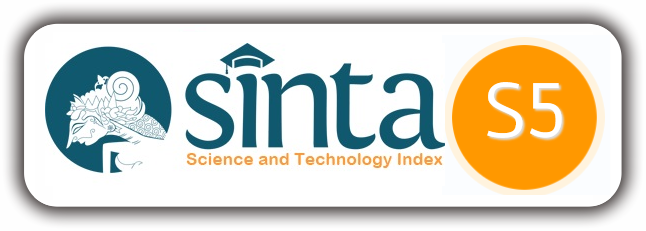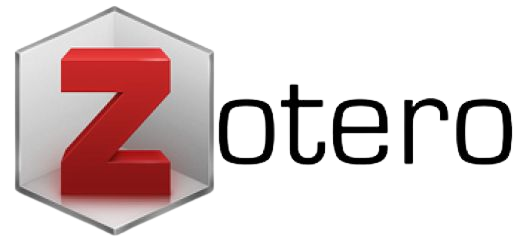EVALUASI SUPPLY CHAIN MANAGEMENT (STUDI KASUS PADA PT ASELI DAGADU DJOKDJA)
Meylia Candrawati(1*), Sumiyana Sumiyana(2)
(1) Universitas Gadjah Mada, Yogyakarta
(2) Departemen Akuntansi, Fakultas Ekonomika dan Bisnis, Universitas Gadjah Mada, Yogyakarta
(*) Corresponding Author
Abstract
management PT Aseli Dagadu Djokdja yang masih terjadi handicapped. Selain itu, penelitian
ini dilakukan untuk mengidentifikasi penyebab handicapped supply chain management PT
Aseli Dagadu Djokdja. Penelitian ini menggunakan enam dimensi dalam social network
theory untuk mengoptimalkan supply chain management. Enam dimensi tersebut yaitu
dissemination information dan sharing, communication, collaboration dan innovation,
knowledge management, training dan learning, serta management activities dan problem
solving. Hasil penelitian ini menunjukkan bahwa ketidakoptimalan supply chain management
di PT ADD terjadi karena adanya asimetri informasi. Asimetri informasi menyebabkan
persebaran informasi yang tidak merata antarbagian di perusahaan serta persebaran informasi
kepada internal maupun ekternal. Informasi yang tidak tersebar dengan baik mengakibatkan
lemahnya komunikasi serta kolaborasi antarbagian dalam perusahaan sehingga perusahaan
susah melakukan inovasi. Selain itu, pengembangan sumber daya manusia traning di PT
ADD saat ini masih belum optimal. Hal ini harus menjadi perhatian PT ADD untuk bisa
mengambangkan perusahaan.
Keywords
Full Text:
PDFReferences
Anderson, K.E. 2016. “Getting Acquaintedwith Social Networks and Apps:Picking up the Slack inCommunication and Collaboration.”Library Hi Tech News 33 (9):6–9.Chopra, S. and Meindl, P. 2016. SupplyChain Management: Strategy,Planning, and Operation. PearsonEducation.Creswell, John W. 2014. “ResearchDesign.” Sage, 183–90.Gregoriades, A. and Sutcliffe, A. 2008. “ASocio-Technical Approach toBusiness Process Simulation.”Decision Support Systems 45(4):1017–30.Gunasekaran, A., Patel, C. and Tirtiroglu,E. 2001. Performance Measures andMetrics in a Supply ChainEnvironment. International Journalof Operations & ProductionManagement. Vol. 21.Jraisat, L., Gotsi, M. and Bourlakis, M.2013. “Drivers of InformationSharing and Export Performance inthe Jordanian Agri-Food ExportSupply Chain.” InternationalMarketing Review 30 (4):323–56.Jordan, Christine, and Bak, O. 2016. “TheGrowing Scale and Scope of theSupply Chain: A Reflection onSupply Chain Graduate Skills.”Supply Chain Management: AnInternational Journal 21 (5):610–26.Kembro, J., Selviaridis, K. and Näslund,D. 2014. “Theoretical Perspectives onInformation Sharing in SupplyChains: A Systematic LiteratureReview and Conceptual Framework.”Supply Chain Management: AnInternational Journal 19 (5/6):609–25.Mulder, Regina H., and Andrea D.Ellinger. 2013. “Perceptions ofQuality of Feedback in Organizations:Characteristics, Determinants,Outcomes of Feedback, andPossibilities for Improvement:Introduction to a Special Issue.”European Journal of Training andDevelopment 37:4–23.Miles, Matthew B., A. Michael Huberman,and Johnny Saldana. 2014.“Qualitative Data Analysis: AMethods Sourcebook.” SagePublications, Inc, no. 2014:323–37.Nonaka, Ikujiro. 1994. “A DynamicTheory of Organizational KnowledgeCreation.” Organization Science 5(1):14–37.Othman, R. and Ghani, R.A. 2008.“Supply Chain Management andSuppliers’ HRM Practice.” SupplyChain Management: An InternationalJournal 13 (4):259–62.Raisinghani, M.S. and Meade, L.L. 2005.“Strategic Decisions in Supply‐ chainIntelligence Using KnowledgeManagement: An Analytic‐ network‐process Framework.” Supply ChainManagement: An InternationalJournal 10 (2):114–21.Sekaran, Uma, and Bougie, P. 2013.“Research Methods for Business.” InResearch Methods for Business, 436.Shadur, M.A. and Bamber, G.J. 1994.“Toward Lean Management?International Transferability ofJapanese Management Strategies toAustralia.” International Executive 36(3):343–64.Theriou, N.G. and Aggelidis,. V. 2009. “ATheoretical Framework Contrastingthe Resource-Based Perspective andthe Knowledge-Based View.”European Research Studies Journal12 (3):177–90.Turban, E., Bolloju, N. and Liang, T.P.2010. “Social Commerce: An ECommerce Perspective.”Proceedings of the 12th InternationalConference on ElectronicCommerce: Roadmap for the Futureof Electronic Business (ICEC2010),33–42.Turban, E., Bolloju, N. and Liang, T.P.2011. “Enterprise SocialNetworking: Opportunities,Adoption, and Risk Mitigation.”Journal of OrganizationalComputing and ElectronicCommerce 21 (3):202–20.Turban, E., Lee. J.K., King. D., McKay. J.,and Marshall, P. 2008. “ElectronicCommerce: A Managerial Perspective2008.” Commerce A ManagerialPerspective (5th Ed).Vicedo C.J., Mula. J. and Capó, J. 2011.“A Social Network BasedOrganizational Model for ImprovingKnowledge Management in SupplyChains.” Supply Chain Management:An International Journal 16 (4):284–93.Westerlund, M. and Rajala, R. 2010.“Learning and Innovation in Inter‐organizational NetworkCollaboration.” Journal of Business& Industrial Marketing 25 (6):435–42.Yin, Robert K. 2009. Case StudyResearch : Design and Methods.Applied Social Research MethodsSeries ; Vol. 5.Zaheer, N. and Trkman, P. 2017. “AnInformation Sharing TheoryPerspective on Willingness to ShareInformation in Supply Chains.” TheInternational Journal of LogisticsManagement 28 (2):417–43
Article Metrics
Refbacks
- There are currently no refbacks.
This work is licensed under a Creative Commons Attribution 4.0 International License.
______________________________________________________________________________________________________
2302 - 1500


_logo2.png)





